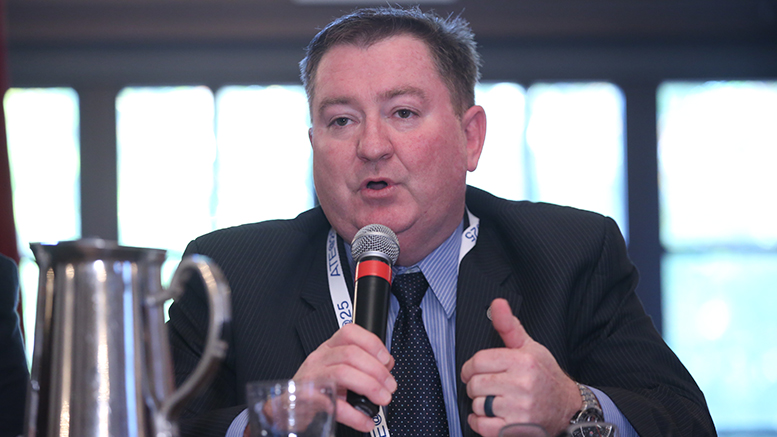Enthusiastic sharing of participants’ work-in-progress projects is a distinguishing characteristic of the annual Advanced Technological Education (ATE) Principal Investigators Conference.
The three-day conference — hosted by the American Association of Community Colleges with support from the National Science Foundation (NSF) — serves as a forum for recipients of NSF ATE grants, industry partners and STEM leaders to share their insights about emerging technologies and workforce trends.
At one panel on the future of work, participants described opportunities for technicians and employers’ expectations that challenge educators to work across disciplines.
“I don’t want four-year degree folks. I need people that can adapt and overcome,” said Peter Bale, CEO of Sentinel Robotic Solutions, which makes unmanned aircraft systems. Bale said the drone industry provides opportunities for careers in air, land and sea.
Bale anticipates a wave of retirements among the industry’s first generation of workers in the next decade, as the paradigm shifts in consumer product delivery systems. And, he added, “Our industry does pay very well.”
Tesla works with a few community colleges to prepare service technicians to work on its electric vehicles. Marti Thomas of Tesla said corporate leaders envision a time when technicians educated in multiple renewable energy technologies will travel to customers’ homes to check solar-powered batteries, service electric vehicles and maintain other renewable systems. His advice for technicians hoping to work for Tesla: “Be open to change.”
Rosario Girasa, a Pace University law professor who has written a book about crypto-currencies, urged educators to promptly learn all they can about Blockchain technologies. Predicting that Blockchain will make a more significant impact than the Internet, Girasa said, “It’s remarkable the changes that are going to take place in every segment of the economy.”
Projects with potential
During conversations at showcase sessions and formal presentations, ATE principal investigators shared innovative STEM education strategies they are testing. Below is a sampling of current ATE initiatives at two-year colleges across the U.S.
Kathleen White, chair of child development and family studies at City College of San Francisco in California, uses the college’s three makerspaces to recruit women and underrepresented minority students as future teachers of STEM and career and technical education. She and her colleagues seed the process by promoting makerspaces among the departments and community organizations that attract diverse students.
“Makerspaces will prepare students for all your pathways and attract a different sort of student,” White said.
Reza Kamali-Sarvestani, associate professor of computer science at Utah Valley University, created virtual reality games to teach nanotechnology. Having students first do experiments using virtual reality allows for more effective learning, reduces mistakes on expensive equipment and avoids potentially dangerous outcomes from mistakes, said Paul Weber, associate professor of physics. The professors also have students use piezo-electric print heads for low-cost nanofabrication. (The print heads use an electric current to pump ink, rather than thermal printing, which uses heat.)
Timothy Thomas, associate dean of physical sciences, engineering applied technology at Mohawk Valley Community College in New York, is developing six micro-credentials from the college’s associate of applied science degree in remotely powered aircraft systems to meet demand from drone manufacturers and repair companies near the federal drone test site in Rome, New York.

Nancy Louwagie, chair of engineering technology at Normandale Community College in Minnesota, developed a fully online foundational science course to help students succeed in the vacuum technology program. The Distance Education and Learning in Vacuum technology for Employment Readiness (DELIVER) project that she leads provides three semester-length courses that integrate hands-on practice with vacuum equipment trainer (VET) systems, which college personnel developed with industry partners. DELIVER ships VET systems to off-site institutional partners where students connect with Normandale instructors via telepresence technologies.
Roger Ebbage, director of the Northwest Water and Energy Education Institute at Lane Community College in Oregon, created an online energy management technician program that enlists employees of utility companies as fieldwork mentors who monitor students when they do hands-on assignments.

